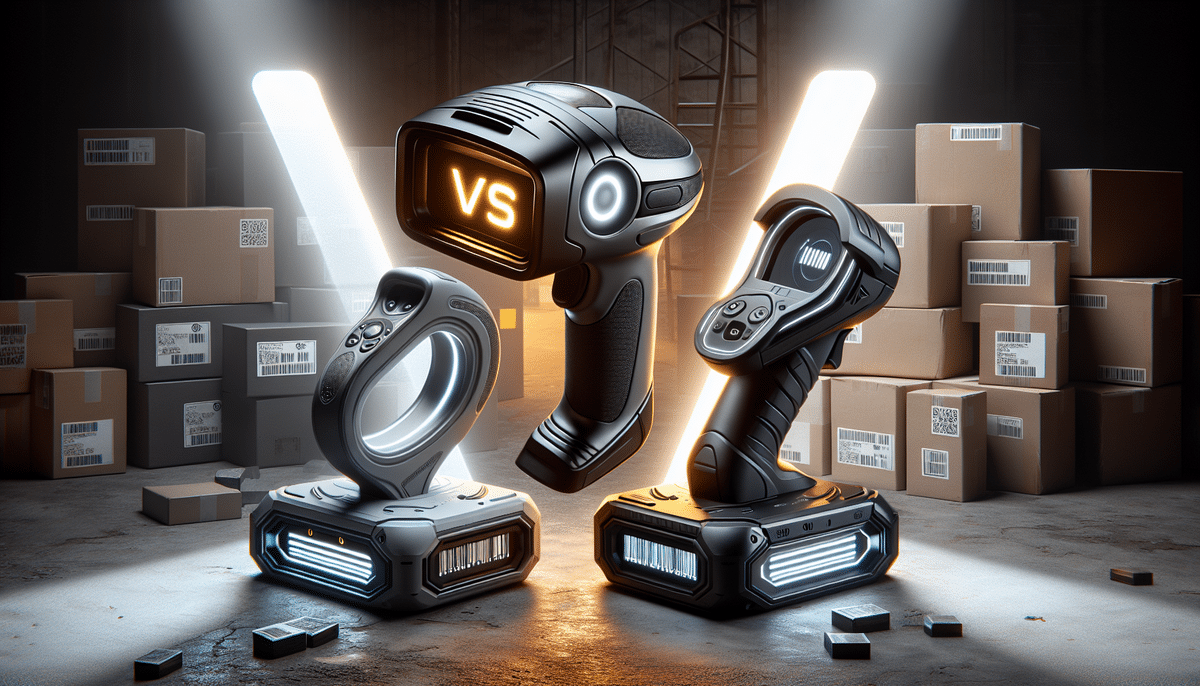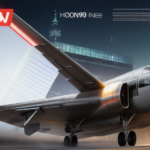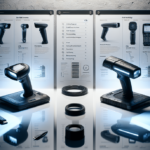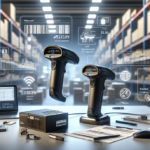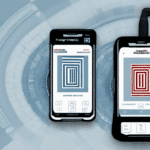Introduction to Barcode Scanners in the Market
Barcode scanners are indispensable tools for businesses across various industries, including retail, healthcare, logistics, and manufacturing. These devices have evolved significantly, offering enhanced speed, accuracy, and durability to meet the growing demands of modern commerce. According to a Statista report, the global barcode scanner market is projected to reach USD 2.5 billion by 2025, highlighting their critical role in business operations.
With the surge in e-commerce and the increasing complexity of inventory management, the need for reliable barcode scanning solutions has never been greater. Advanced scanners now support not only traditional barcodes but also QR codes, facilitating diverse applications from inventory tracking to marketing campaigns.
Overview of Zebra DS8178
The Zebra DS8178 is a high-performance handheld barcode scanner renowned for its speed and accuracy. Equipped with a high-resolution image sensor, it can scan barcodes from up to 24 inches away, making it ideal for long-range scanning tasks in environments like warehouses and large retail spaces.
Key features of the Zebra DS8178 include:
- PRZM Intelligent Imaging technology for superior scanning performance
- Bluetooth connectivity for seamless wireless operation
- Rugged design with IP42 rating, ensuring protection against dust and water splashes
- Extended battery life, capable of up to 24 hours of continuous use
Its ergonomic and lightweight design reduces user fatigue, allowing for extended use without discomfort. These attributes make the Zebra DS8178 a preferred choice for businesses requiring reliable and efficient scanning solutions.
Overview of Honeywell Xenon 1900g
The Honeywell Xenon 1900g is another top-tier handheld barcode scanner favored for its robust performance and versatility. It features a custom sensor optimized for rapid and accurate barcode reads, regardless of barcode size or orientation.
Notable features of the Honeywell Xenon 1900g include:
- Adaptus Imaging Technology for reading damaged or poorly printed barcodes
- Aim and shoot design for intuitive alignment of barcodes
- Multiple connectivity options including USB, Bluetooth, and RS-232
- Durable construction with IP41 rating, suitable for challenging environments
The scanner's user-friendly interface allows easy customization of settings, enhancing its adaptability across various industrial applications.
Key Features Comparison
Scanning Performance
Both the Zebra DS8178 and Honeywell Xenon 1900g offer exceptional scanning performance. The DS8178 boasts a high-resolution image sensor that supports long-range scanning, while the Xenon 1900g utilizes Adaptus Imaging Technology to accurately read damaged or poorly printed barcodes. According to a Gartner study, advanced imaging technologies in barcode scanners improve read rates by up to 15% over traditional laser scanners.
Durability and Ruggedness
Durability is a critical factor for barcode scanners used in harsh environments. The Zebra DS8178 has an IP42 rating, offering protection against dust and water splashes, and can withstand drops from up to 6 feet. In contrast, the Honeywell Xenon 1900g has an IP41 rating and is also built to endure similar drop heights. The Xenon 1900g's reinforced body and scratch-resistant window provide additional protection, making it slightly more rugged in demanding settings.
Design and Ergonomics
Ergonomics play a vital role in user satisfaction and productivity. The Zebra DS8178 features a lightweight and compact design with a soft-touch finish, enhancing grip and reducing user fatigue during prolonged use. Meanwhile, the Honeywell Xenon 1900g includes a flexible stand that allows for different positioning angles, catering to varied scanning scenarios.
Connectivity Options
Connectivity capabilities determine the flexibility of deployment for barcode scanners. The Zebra DS8178 offers Bluetooth connectivity with a range of up to 100 feet and includes a Wi-Fi Friendly Mode to minimize interference in wireless networks. The Honeywell Xenon 1900g provides versatile connectivity options, including USB, Bluetooth, and RS-232, ensuring compatibility with a wide range of devices and systems.
Battery Life
Battery longevity is essential for uninterrupted operations. The Zebra DS8178 supports up to 24 hours of continuous use on a single charge and can perform up to 50,000 scans, making it suitable for intensive use in high-demand environments. In comparison, the Honeywell Xenon 1900g utilizes two replaceable AA batteries, also supporting up to 50,000 scans but may require more frequent battery changes depending on usage patterns.
User Reviews and Feedback
User feedback is a valuable indicator of a product's real-world performance. Both the Zebra DS8178 and Honeywell Xenon 1900g have garnered positive reviews for their reliability and efficiency. The Zebra DS8178 is frequently praised for its long-range scanning and ergonomic design, while the Honeywell Xenon 1900g is commended for its adaptability and robust build quality. According to TrustRadius user reviews, the DS8178 consistently receives high ratings for performance, whereas the Xenon 1900g is highlighted for its durability and ease of use.
Pricing Comparison
Pricing is a significant consideration when selecting a barcode scanner. The Zebra DS8178 is typically priced higher than the Honeywell Xenon 1900g due to its advanced features like long-range scanning and extended battery life. On average, the DS8178 may cost approximately $450, whereas the Xenon 1900g is available for around $350. It is advisable to consult multiple retailers and consider available promotions or discounts to obtain the best value. Additionally, factoring in the total cost of ownership, including maintenance and potential downtime, can influence the overall cost-effectiveness of each scanner.
Pros and Cons of Zebra DS8178 and Honeywell Xenon 1900g
Zebra DS8178
- Pros:
- High-resolution image sensor for long-range scanning
- PRZM Intelligent Imaging technology
- Ergonomic and lightweight design
- Extended battery life with up to 24 hours of use
- Bluetooth connectivity with wide range
- Cons:
- Higher price point compared to some competitors
Honeywell Xenon 1900g
- Pros:
- Adaptus Imaging Technology for damaged barcode reads
- Aim and shoot design for easy alignment
- Durable and rugged construction
- Multiple connectivity options
- Lower initial cost
- Cons:
- Shorter battery life requiring frequent replacements
- Limited long-range scanning capability
Which Barcode Scanner Is Better Suited for Your Business Needs?
Choosing between the Zebra DS8178 and Honeywell Xenon 1900g depends on your specific business requirements and budget. If your operations demand long-range scanning, extended battery life, and enhanced imaging capabilities, the Zebra DS8178 is an excellent investment despite its higher cost. Conversely, if budget constraints are a primary concern and your scanning needs are within typical range requirements, the Honeywell Xenon 1900g offers robust performance and durability at a more accessible price point.
Consider factors such as the scanning environment, frequency of use, and specific features that align with your operational goals to make an informed decision.
Conclusion: Final Verdict
Both the Zebra DS8178 and Honeywell Xenon 1900g are top-tier barcode scanners that offer a range of features tailored to different business needs. The Zebra DS8178 stands out with its superior scanning range, advanced imaging technology, and extended battery life, making it ideal for high-demand environments. On the other hand, the Honeywell Xenon 1900g provides reliable performance, exceptional durability, and cost-effectiveness, suitable for businesses seeking dependable scanning solutions without a premium price tag.
Ultimately, the best choice depends on balancing your business's specific requirements with your budget. Investing in a scanner that aligns with your operational demands can significantly enhance efficiency, accuracy, and overall productivity.















